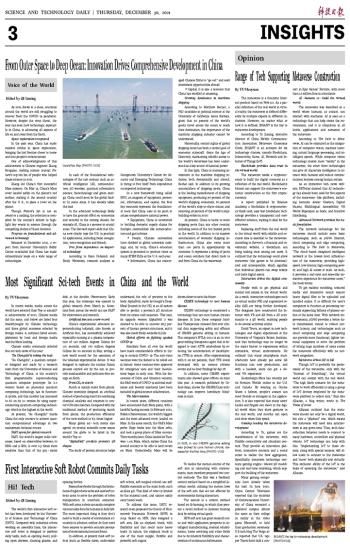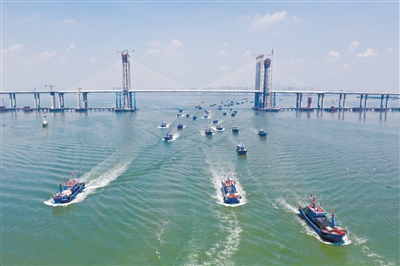
 |
| Quanzhou Bay. (PHOTO: VCG) |
As 2021 draws to a close, countries around the world are still struggling to recover from the COVID-19 pandemic. However, despite the virus threat, the year has seen how technology, especially in China, is advancing all aspects of life on and away from the Earth.
Space exploration recognized
In the past year, China has made massive strides in space exploration, bringing the last frontier closer to home and into people's consciousness.
One of acknowledgments of this achievement is Chinese engineer Zhang Rongqiao, making science journal Nature's top ten list of people who helped shape science in 2021.
Zhang led China's first successful Mars mission. On May 15, China's Mars rover landed safely on the planet's red surface, making it the second country after the U. S., to place a rover on the planet.
Though Nature's list is not an award or a ranking, the selection is compiled by the journal's editors to highlight key events in science through the compelling stories of those involved.
Progress on foundational and advanced technology
Released in December 2021, a report from Harvard University's Belfer Center concluded that China has made extraordinary leaps on a wide range of technologies.
In each of the foundational technologies of the 21st century, such as artificial intelligence (AI), semiconductors, 5G wireless, quantum information science, biotechnology and green energy, China could soon be the global leader. In some areas, it has already taken the lead.
In the advanced technology likely to have the greatest effect on economics and security in the coming decade, for example AI, China is a pioneer in crucial areas. The Harvard report adds that China now clearly tops the U.S. in practical AI applications, including facial recognition, voice recognition and fintech.
Free from dependence on imported technology
According to Ryan Fedasiuk and Emily Weinstein, research analysts at Georgetown University's Center for Security and Emerging Technology, China is trying to free itself from dependence on imported technology.
In a new framework being called EPIC, an anagram of equipment, personnel, information, and capital, the four key resources represent the foundational tools that China uses in its push to amass comprehensive national power.
?Equipment, China is committed to building domestic supply chains for linchpin commodities like semiconductors and gas turbines.
?People, Chinese universities have climbed in global university rankings, and, by 2025, China's education system is projected to produce twice as many STEM PhDs as the U. S. each year.
?Information, China has encouraged Chinese firms to "go out" and seek investment opportunities abroad.
?Capital, it is also a resource that China has excelled at amassing.
Growing dominance in maritime shipping
According to Matthew Rochat, a PhD candidate in political science at the University of California Santa Barbara, given that 90 percent of the world's goods travel across the ocean to reach their destination, the importance of the maritime shipping industry cannot be understated.
Historically, control rights of global shipping lanes has been a central goal of economic statecraft. Since the Age of Discovery, maintaining reliable access to the world's waterways has been understood as a key source of national power.
In this light, China is increasing investment in the maritime shipping industry, both domestically and abroad, Rochat said. In addition to its growing accumulation of shipping ports, China is the leading manufacturer of shipping equipment, producing 96 percent of the world's shipping containers, 80 percent of the world's ship-to-shore cranes, and receiving 48 percent of the world's shipbuilding orders in 2020.
At present, China is home to more shipping ports than any other country, including seven of the ten busiest ports in the world. In addition to its massive accumulation of domestic shipping infrastructure, China also owns more than 100 ports in approximately 63 countries. It represents a string of ports and ocean corridors that direct trade to and from China via the waterways.


 Next
Next




